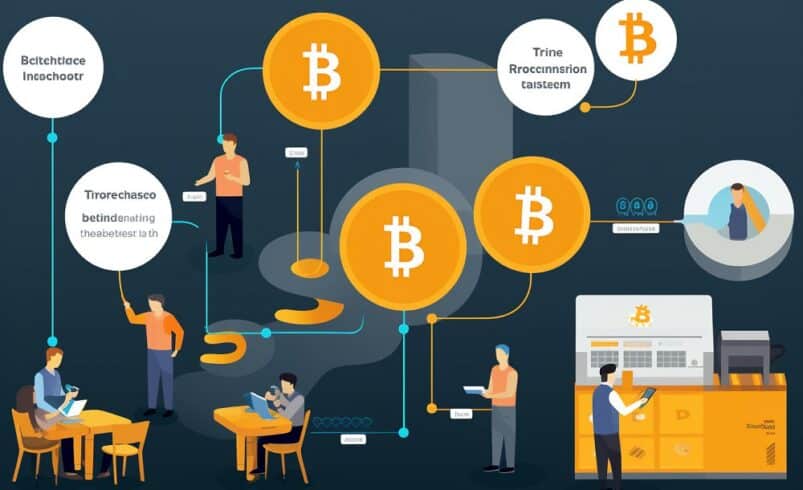Replace-by-Fee (RBF) In Bitcoin Transactions: Here’s What To Know

Table of Contents
RBF Policy Explained
In Bitcoin transactions, the Replace-by-Fee (RBF) policy allows users to adjust and replace pending transactions with new ones by paying higher fees. Introduced in 2016 as part of the Bitcoin protocol version 0.12.0, RBF offers flexibility amidst fluctuating network conditions.
Still, its utilization also brings notable considerations and potential challenges within the Bitcoin ecosystem. Nevertheless, the Replace-by-Fee (RBF) policy within the Bitcoin network represents a significant aspect of transaction flexibility.
This strategic adjustment allows individuals to accelerate the confirmation process, especially in response to a congested network. Implemented within the Bitcoin Core software, the RBF policy was introduced as part of Bitcoin Improvement Proposal (BIP)-125 to enhance users’ ability to manage their transactions effectively.
RBF empowers users to increase the likelihood of prompt confirmation within the network by replacing an existing unconfirmed transaction with a new one alongside a higher fee.
Critical Components Of RBF Protocol
Besides the fee adjustment, the Replace-by-Fee (RBF) policy hinges on essential elements that govern its operation within the Bitcoin network:
- Sequence Number Indicator: A distinct “sequence number” in replacement transactions signals to supersede prior unconfirmed transactions. This number surpasses the original, marking it as a replacement.
- Network Impact and Miner Response: Broadcasted replacement transactions with elevated fees may entice miners to prioritize them, leading to faster confirmation than initial transactions.
- Confirmation and Transaction Override: Including the replacement transaction in a block invalidates the original, effectively removing it from processing and ensuring only the replacement is confirmed.
While offering users a means to manage and adjust transaction fees for faster confirmations, applying the Replace-by-Fee policy introduces specific challenges within the Bitcoin network.
Factors Impacting RBF Transactions
A few factors can affect the Replace-by-Fee (RBF) policy in Bitcoin. First, users picking the transaction fees can trigger RBF by choosing higher costs. If lots of people are making transactions, RBF might be used to speed things up. How much users understand RBF and how miners react to higher fees also impact whether RBF works well.
These factors help users decide when to use RBF for their Bitcoin transactions.
Support For RBF In Blockchain Networks
The RBF policy is embedded in Bitcoin Core, supporting the replaceability of unconfirmed transactions with higher fee alternatives. However, its implementation might vary across different wallets and services within the Bitcoin ecosystem.
For instance, some wallets may not offer this feature.
How RBF Functions
Meanwhile, understanding the functionality of RBF involves a nuanced exploration of its underlying processes: The journey of a Bitcoin transaction starts with its initiation by a user through a wallet or platform.
Once created, the transaction enters the mempool—a temporary storage area for unconfirmed transactions awaiting inclusion in a block. Users can activate the RBF option when they realize the need for fee adjustments due to slow confirmation or inadequate fees.
To do so, they generate a new transaction with a higher fee, signifying their intention to replace the original. This latest transaction includes a unique “sequence number” signaling its RBF status.
The distinctive sequence number within the new transaction’s input is a marker, indicating its purpose to replace an earlier transaction. This sequence number is higher than the original transaction, signifying the intent to replace it with a more favorable fee.
Users then broadcast the replacement transaction across the Bitcoin network. Miners responsible for selecting transactions to be included in blocks encounter the replacement transaction bearing the increased fee.
Since miners prioritize transactions with higher fees for block inclusion, they would favor the replacement transaction over the original one. The original transaction is overridden after successfully inserting the replacement transaction in a block.
The replacement transaction secures its place in the block, confirming the Bitcoin transfer, while the original transaction is “bumped” out of the mempool and will no longer be processed by miners.
The efficacy and success of RBF-driven replacements rely on network dynamics, miner behavior, and the fee differentials between the original and replacement transactions. Transactions featuring substantially increased fees via RBF may stand a better chance of swifter confirmation.
In contrast, minor fee adjustments may slightly improve the confirmation odds without significantly escalating costs.
Turning RBF On And Off
Users keen on enabling RBF must verify wallet support and access settings to activate the RBF option. Conversely, disabling RBF involves accessing settings to deactivate this feature and ensuring it’s not activated in default transactions.
Challenges And Concerns
RBF raises double-spending concerns as users can replace unconfirmed transactions, creating confusion for merchants and recipients. Additionally, it complicates the user experience by causing delays or unexpected replacements.
Furthermore, network efficiency could suffer due to congestion caused by transactions with extensive fees.
Conclusion
Understanding RBF’s mechanics and implications is vital for Bitcoin users seeking transaction flexibility amidst network fluctuations.
Time Crypto Market offers content visibility for dozens of crypto enterprises, and you can be a part of our network! Reach out to us on our telegram chat for inquiries. The nature of cryptocurrencies is highly unpredictable; always perform your due diligence before any investment. Several articles on our site come from guest contributors or are commissioned pieces, not originating from Time Crypto Market's in-house writers. The perspectives shared in these articles might not necessarily align with those of Time Crypto Market. We do not assume responsibility for the veracity, caliber, promotions, offerings, or any other elements presented on our platform. Consult our comprehensive terms of service and disclaimer for more details.








